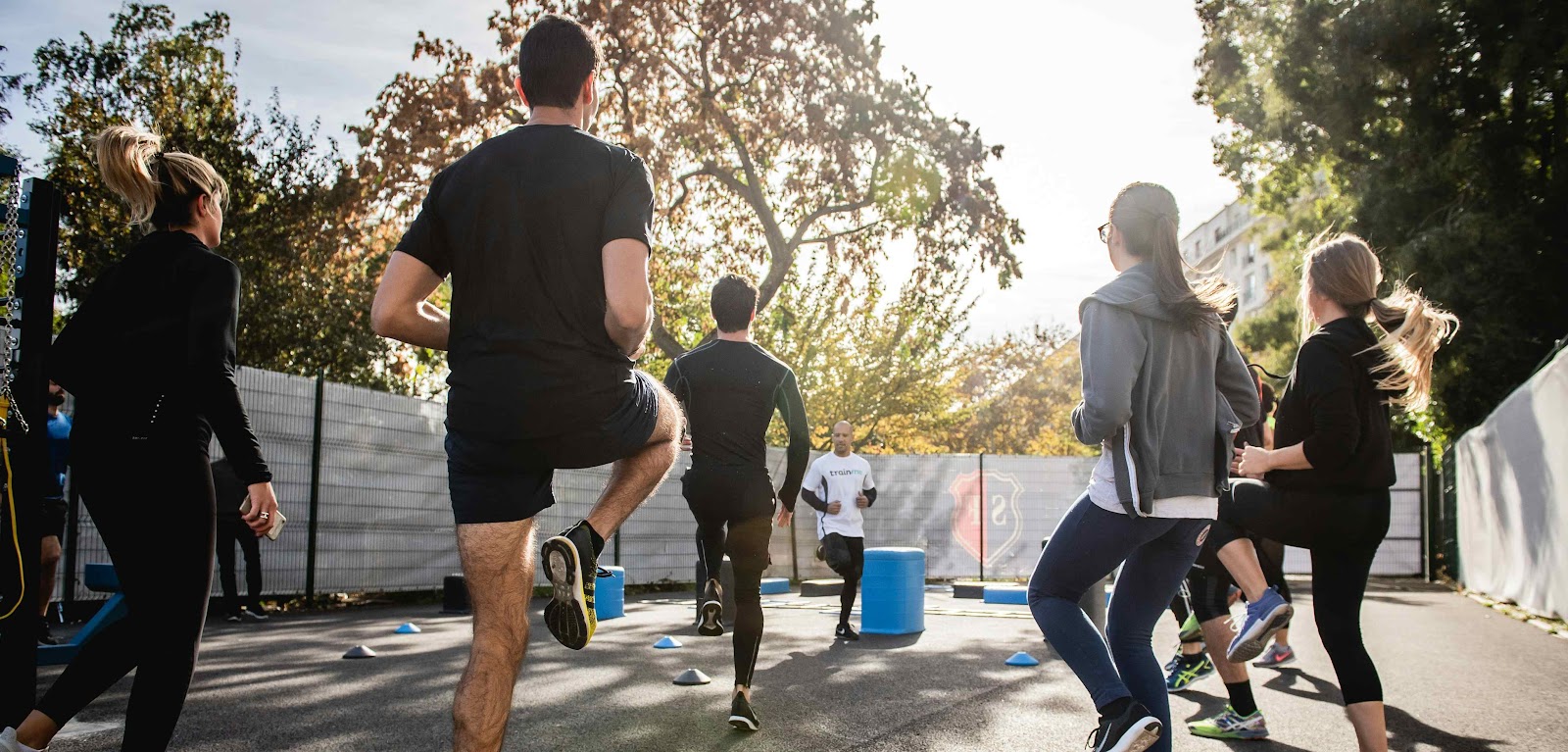
Cardiovascular Exercise for Weight Loss: What Really Works. Cardiovascular exercise is one of the most popular methods for weight loss, and many people are on the lookout for strategies that yield real, sustainable results. Whether you’re new to fitness or a seasoned workout enthusiast, understanding how cardiovascular exercise works can help you unlock a healthier, happier lifestyle. In this article, we’ll explore the science behind Cardiovascular Exercise for Weight Loss, review a variety of effective workout options, offer tips on building your routine, discuss the importance of aligning lifestyle and diet with your exercise habits, and share strategies for staying motivated over time.
Cardiovascular Exercise for Weight Loss: The Science Behind the Burn
At its core, cardiovascular exercise is any activity that raises your heart rate and increases blood circulation, stimulating your cardiovascular system. When performed consistently, these exercises help burn calories, reduce body fat, and boost your metabolism. The magic of Cardiovascular Exercise for Weight Loss lies in its ability to create an energy deficit: by burning more calories than you consume, your body starts to tap into fat reserves for energy.
The underlying principle is simple yet powerful. During a cardio workout, your muscles require more oxygen to generate energy, which in turn causes your heart to pump harder and your lungs to work faster. This increased oxygen consumption leads to a higher calorie burn both during and, importantly, after the workout. Known as the “afterburn effect” or excess post-exercise oxygen consumption (EPOC), this phenomenon means that your body continues to burn additional calories as it returns to its resting state. Understanding how your body responds to cardiovascular workouts can empower you to design a regimen that not only maximizes calorie burn during exercise but also harnesses this additional energy expenditure afterward.
Furthermore, cardiovascular exercise offers benefits that extend far beyond weight loss. Regular sessions can improve heart health, lower blood pressure, reduce the risk of chronic diseases like type 2 diabetes, and elevate mood by releasing endorphins. These physiological and psychological benefits are a testament to why Cardiovascular Exercise for Weight Loss is such a cornerstone of a balanced, health-conscious lifestyle.
Cardiovascular Exercise for Weight Loss: Popular Workout Options

The beauty of cardiovascular exercise is that it comes in many forms, making it accessible for everyone regardless of fitness level, interests, or physical limitations. When thinking about Cardiovascular Exercise for Weight Loss, it’s important to choose activities that you enjoy, so you’re more likely to stick with them over time. Here are some popular options to consider:
- Running and Jogging: Whether outdoors on nature trails or indoors on a treadmill, running is a classic and highly efficient way to burn calories. For many, it represents the essence of Cardiovascular Exercise for Weight Loss, providing both a mental escape and a physical challenge. (Read More: 10 Benefits of Cardiovascular Exercise in Home You Need to Know).
- Cycling: Biking offers a low-impact alternative that’s gentle on the joints while still providing excellent cardiovascular benefits. Group rides, stationary bikes, and spin classes bring an element of social interaction or structured workout intensity that can be very motivating.
- Swimming: Known as a full-body workout, swimming is particularly effective for those who require a lower-impact exercise due to joint issues. The resistance provided by water means you not only boost your heart rate but also strengthen muscles in a safe environment.
- Dancing: From Zumba to aerobics, dancing elevates your heart rate and adds an element of fun and creativity to your exercise routine. It’s another dynamic example of Cardiovascular Exercise for Weight Loss that fits well with modern trends toward experiential fitness.
- Rowing: A less common option, rowing is highly effective because it involves both aerobic and strength training components. Whether using a rowing machine or heading out on the water, this activity can be an excellent addition to your Cardiovascular Exercise for Weight Loss plan.
- HIIT (High-Intensity Interval Training): Combining bursts of intense activity with short periods of recovery, HIIT can skyrocket your calorie burning in a very time-efficient manner. This method is increasingly recognized as one of the most effective forms of Cardiovascular Exercise for Weight Loss due to its ability to boost metabolism long after the workout has ended.
Choosing the right exercise can depend on factors such as personal interests, physical condition, and even the environment you’re exercising in. With numerous options available, it’s all about finding the activity that you not only enjoy but that also consistently challenges you to push your limits.
Cardiovascular Exercise for Weight Loss: Building Your Routine
Designing a workout routine around Cardiovascular Exercise for Weight Loss can be both exciting and a little daunting. The key is to start with manageable goals and gradually increase the intensity or duration as your fitness improves. Establishing a regular workout schedule is vital in ensuring that the benefits are long-lasting and that your body remains in a constant state of growth and challenge. (Read More: What Are the Cardiovascular Exercises That Can Transform Your Heart Health?).
One of the most effective ways to build your exercise routine is to mix and match different types of cardio workouts. Not only does this prevent boredom, but it also helps work different muscle groups and prevents overuse injuries. For instance, you might alternate between running, cycling, and swimming over the course of a week. If you enjoy the idea of high-energy sessions, consider incorporating HIIT workouts a couple of times per week, which can offer rapid improvements in cardiovascular fitness and fat burning.
Creating a structured plan may also involve setting measurable goals. Whether it’s increasing the distance you run, decreasing your time on the treadmill, or simply committing to a specific number of workouts per week, these targets create a roadmap to success. Tracking your progress using fitness apps or a workout journal can provide an added sense of accomplishment, turning what might seem like a routine practice into a gratifying journey of incremental achievements. Remember, a well-structured routine that aligns with your current level of fitness can lead to meaningful improvements without overwhelming you.
For those new to exercise, a gradual introduction is advisable. Start with moderate-intensity activities, and over time, as your endurance builds, consider pushing the envelope with interval training or more vigorous sessions. The idea is to ensure that your body adapts naturally without imposing undue stress, setting you up for long-term success with Cardiovascular Exercise for Weight Loss.
Cardiovascular Exercise for Weight Loss: Diet and Lifestyle Tips

While cardiovascular exercise plays a crucial role in weight loss, it is most effective when combined with a thoughtful approach to diet and overall lifestyle. The connection between a balanced diet and effective weight management is well documented, and merging these concepts with regular cardio sessions can amplify your progress significantly.
In the realm of Cardiovascular Exercise for Weight Loss, what you eat fuels your workouts and contributes to recovery. Nutrient-dense foods such as lean proteins, whole grains, fruits, and vegetables provide the energy required for effective exercise. Incorporating a variety of these foods into your diet can ensure that you have sufficient energy to perform at your best while also managing your weight. Paying attention to portion sizes, staying hydrated, and opting for whole, minimally processed foods helps create a supportive nutritional environment.
It’s also important to be mindful of the timing of your meals. For example, a light snack before your workout—such as a banana or a small portion of yogurt—can provide a quick energy boost without causing discomfort. Post-exercise nutrition is equally important; consuming a balanced meal after your workout helps repair muscle tissues and replenish lost glycogen, setting the stage for your next session of Cardiovascular Exercise for Weight Loss.
In addition to diet, lifestyle factors such as sleep, stress management, and daily physical activity all contribute to your success. Adequate sleep allows your body to recover, repairs muscle tissues, and contributes to hormonal balance—all of which are essential for effective weight management. Managing stress through methods like meditation, deep-breathing exercises, or even leisurely walks can complement the physical benefits of your workouts. When your overall lifestyle aligns with your exercise routine, your efforts in Cardiovascular Exercise for Weight Loss become more sustainable and rewarding.
Many people find that small changes, like taking the stairs instead of the elevator or incorporating short walks during breaks, can add up over time. Consistency in these everyday habits reinforces your commitment to a healthier lifestyle and supports the long-term outcomes of your cardiovascular exercise program. (Read More: Discover What Are the Cardiovascular Exercises Recommended by Experts).
Cardiovascular Exercise for Weight Loss: Staying Motivated and Tracking Progress

Staying motivated is often the toughest challenge on the journey to weight loss. Even the most effective Cardiovascular Exercise for Weight Loss programs can lose their appeal if you’re not properly inspired or if progress seems slow. However, there are numerous strategies to keep your motivation levels high and to continuously challenge yourself throughout the process.
Start by setting realistic and achievable goals. Breaking your overall objective into smaller milestones, such as improving your endurance, achieving a new personal best in distance or time, or even just consistently hitting your weekly workout target, can provide ongoing motivation. Every little victory adds up and reinforces the belief that you are on the right path. Celebrate these small wins in a way that acknowledges your effort without detracting from your long-term vision.
Tracking your progress is another powerful tool in maintaining motivation. This could be as simple as maintaining a workout diary, using mobile apps that record your performance, or even engaging in community challenges or fitness groups that share similar objectives. By monitoring changes in your endurance, speed, or overall fitness level, you create a visual representation of your progress that often serves as a reminder of your hard work. These progress markers are valuable feedback and inspire you to push further in your Cardiovascular Exercise for Weight Loss routine.
Additionally, mixing up your routine can ward off the monotony that many face over time. Incorporating new exercises, exploring different outdoor routes, or even joining group classes can infuse a sense of novelty and excitement into your workouts. Changing the scenery and the workout format not only keeps your mind engaged but also challenges your muscles in new ways, which may lead to further improvements in performance and calorie burn.
Social interaction can also be a strong pillar of motivation. Partnering up with a friend, joining a fitness club, or engaging with an online community offers encouragement, accountability, and shared experiences. When others support your journey, you’re more likely to stay consistent with your Cardiovascular Exercise for Weight Loss efforts. Sharing challenges, tips, and even occasional setbacks with a community that understands your goals can provide solace and spur you on during tougher days.
It is also important to remember that every fitness journey is unique. Comparing your progress with others might sometimes be discouraging, so focusing on your personal growth is paramount. As you experience gradual improvements in physical endurance, energy levels, and overall well-being, the journey itself becomes a reward. Keeping a flexible mindset and allowing yourself the freedom to explore different approaches can make the process of Cardiovascular Exercise for Weight Loss an engaging and enriching part of your life.
Whether you’re inspired by watching others on social media, drawing on personal milestones, or setting up regular challenges for yourself, the continuous commitment to your cardio routine is vital. Embracing both the physical and emotional aspects of exercise can turn what might initially seem like a chore into a rewarding and life-enhancing pursuit.
By understanding the various facets of Cardiovascular Exercise for Weight Loss—from the fundamental science that underpins effective calorie burning to the diverse array of workouts available, from constructing a balanced routine that meshes seamlessly with your lifestyle to maintaining unwavering motivation—you equip yourself with a comprehensive toolkit for achieving sustainable weight loss. The blend of enjoyment, commitment, and gradual progress is what often transforms routine workouts into a lifelong habit that offers ongoing health benefits and personal satisfaction.





2 thoughts on “Cardiovascular Exercise for Weight Loss: What Really Works”
Comments are closed.